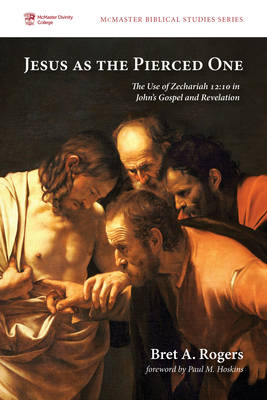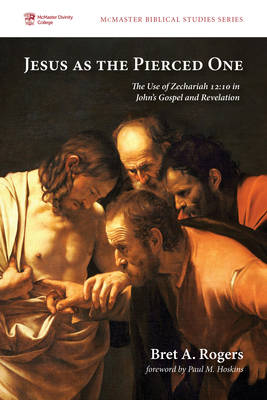
- Afhalen na 1 uur in een winkel met voorraad
- Gratis thuislevering in België vanaf € 30
- Ruim aanbod met 7 miljoen producten
- Afhalen na 1 uur in een winkel met voorraad
- Gratis thuislevering in België vanaf € 30
- Ruim aanbod met 7 miljoen producten
Zoeken
€ 52,95
+ 105 punten
Uitvoering
Omschrijving
How can John use Zech 12:10 to explain both Jesus' first coming in humility (John 19:37) and Jesus' second coming in glory (Rev 1:7)? In this book, Rogers demonstrates how God's self-revelation in Jesus provides the key for understanding the fulfillment of Zech 12:10 in light of both John's high Christology and John's inaugurated and consummated eschatology. In contrast to previous approaches, Rogers proposes that John interprets Zech 12:10 not simply along a human, messianic axiom, but along a divine, messianic axiom. Moreover, by treating Zech 12:10, John 19:37, and Rev 1:7 in a single study, readers will better understand the unified narrative spanning the Testaments, the nature of Jesus' divine identity and mission in John's writings, and how Jesus' divine nature and mission compels the church to live between his two advents.
Specificaties
Betrokkenen
- Auteur(s):
- Uitgeverij:
Inhoud
- Aantal bladzijden:
- 304
- Taal:
- Engels
- Reeks:
Eigenschappen
- Productcode (EAN):
- 9781532696404
- Verschijningsdatum:
- 8/06/2020
- Uitvoering:
- Paperback
- Formaat:
- Trade paperback (VS)
- Afmetingen:
- 152 mm x 229 mm
- Gewicht:
- 412 g

Alleen bij Standaard Boekhandel
+ 105 punten op je klantenkaart van Standaard Boekhandel
Beoordelingen
We publiceren alleen reviews die voldoen aan de voorwaarden voor reviews. Bekijk onze voorwaarden voor reviews.








